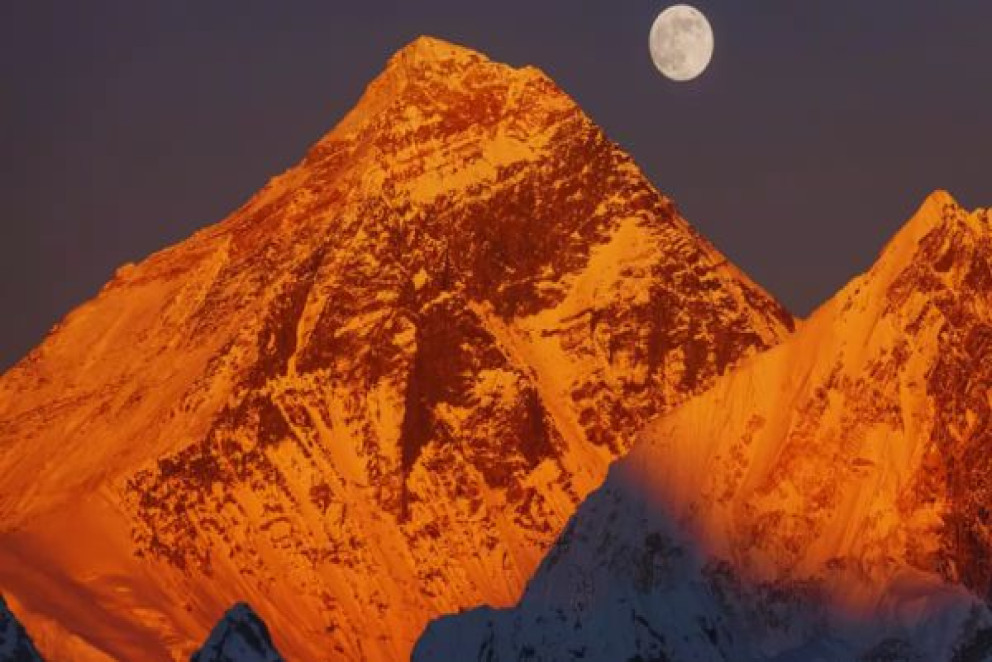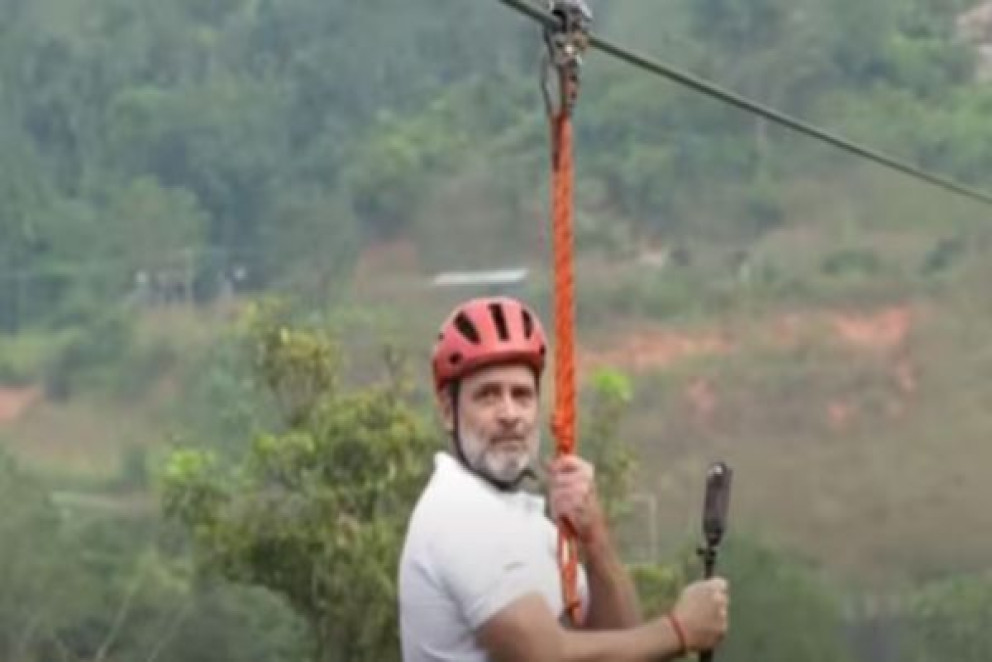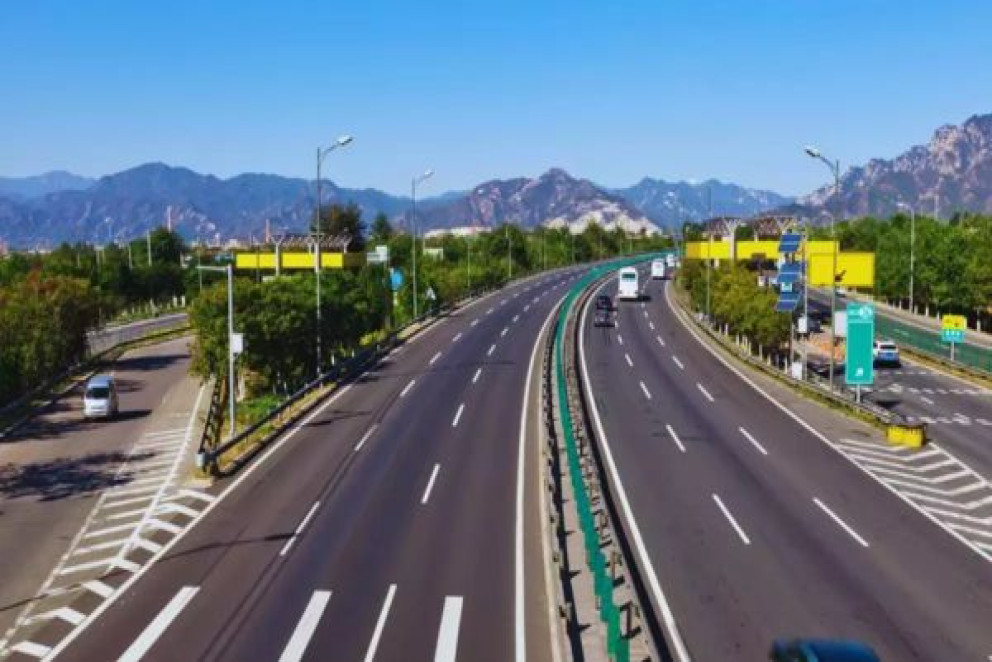Blog Details

Why does Mount Everest make terrifying noises at night?
Mount Everest, with its grandeur and allure, has not only captivated the imaginations of climbers, but also of scientists and adventurers for generations. Yet, one of its mysteries managed to evade exploration for the longest time. The mystery that we are talking about is that after nightfall, eerie sounds can be heard from the glaciers surrounding the mountain's summit, adding an unsettling dimension to its already formidable reputation.
If reports are to go by, in 2018, a team of researchers led by glaciologist Evgeny Podolskiy from the Arctic Research Center at Hokkaido University head out on a pioneering expedition to the Nepalese Himalayas. Their mission was to unravel the enigma of these haunting nocturnal sounds. They set up a camp amid the majestic Trakarding-Trambau Glacier system, which is situated around 3 miles above the sea level and is in clear view of Everest; the team braved bone-chilling temperatures to carry out their investigations.
During their stay there, Dr. Podolskiy and his colleagues personally experienced the eerie phenomenon. Accomplished expedition leader Dave Hahn, who has scaled Everest 15 times, described the unsettling sensation of hearing the cacophony of ice and rock crashing in the valley below, making sleep a challenge.
Deploying seismic sensors akin to those used to measure earthquakes, the researchers meticulously collected data on the glacier's vibrations. Their analysis revealed a remarkable correlation between the chilling drop in temperature after sundown and the exploding sound of cracking ice. Published in the esteemed journal Geophysical Research Letters, their findings shed light on the intricate relationship between temperature fluctuations and seismic activity within glaciers.
This groundbreaking research not only deepens our understanding of glacial dynamics but also sheds light on the profound impact of climate change on these delicate ecosystems. As global temperatures rise, glaciers in remote regions like the Himalayas face unprecedented challenges. The rapid rate of glacial melt not only threatens local communities with the risk of catastrophic floods, but also jeopardises water security for millions downstream.
The Himalayan region, often referred to as the ‘Third Pole’ due to its vast freshwater reserves, is experiencing accelerated glacial melt due to anthropogenic climate change. Dr. Podolskiy's work contributes vital insights into the behaviour of Himalayan glaciers, informing efforts to mitigate the adverse effects of climate change on water resources and disaster risk management.
As the urgency of climate action becomes increasingly apparent, the need to preserve these invaluable natural resources grows ever more critical. Dr. Podolskiy's research serves as a poignant reminder of the profound interconnectedness between human activity and the fragile ecosystems upon which we depend. Only through concerted global efforts to reduce greenhouse gas emissions can we hope to safeguard the future of our planet and its majestic glaciers.
If reports are to go by, in 2018, a team of researchers led by glaciologist Evgeny Podolskiy from the Arctic Research Center at Hokkaido University head out on a pioneering expedition to the Nepalese Himalayas. Their mission was to unravel the enigma of these haunting nocturnal sounds. They set up a camp amid the majestic Trakarding-Trambau Glacier system, which is situated around 3 miles above the sea level and is in clear view of Everest; the team braved bone-chilling temperatures to carry out their investigations.
During their stay there, Dr. Podolskiy and his colleagues personally experienced the eerie phenomenon. Accomplished expedition leader Dave Hahn, who has scaled Everest 15 times, described the unsettling sensation of hearing the cacophony of ice and rock crashing in the valley below, making sleep a challenge.
Deploying seismic sensors akin to those used to measure earthquakes, the researchers meticulously collected data on the glacier's vibrations. Their analysis revealed a remarkable correlation between the chilling drop in temperature after sundown and the exploding sound of cracking ice. Published in the esteemed journal Geophysical Research Letters, their findings shed light on the intricate relationship between temperature fluctuations and seismic activity within glaciers.
This groundbreaking research not only deepens our understanding of glacial dynamics but also sheds light on the profound impact of climate change on these delicate ecosystems. As global temperatures rise, glaciers in remote regions like the Himalayas face unprecedented challenges. The rapid rate of glacial melt not only threatens local communities with the risk of catastrophic floods, but also jeopardises water security for millions downstream.
The Himalayan region, often referred to as the ‘Third Pole’ due to its vast freshwater reserves, is experiencing accelerated glacial melt due to anthropogenic climate change. Dr. Podolskiy's work contributes vital insights into the behaviour of Himalayan glaciers, informing efforts to mitigate the adverse effects of climate change on water resources and disaster risk management.
As the urgency of climate action becomes increasingly apparent, the need to preserve these invaluable natural resources grows ever more critical. Dr. Podolskiy's research serves as a poignant reminder of the profound interconnectedness between human activity and the fragile ecosystems upon which we depend. Only through concerted global efforts to reduce greenhouse gas emissions can we hope to safeguard the future of our planet and its majestic glaciers.
Source: Times of India



